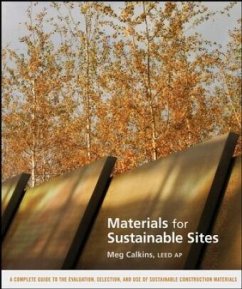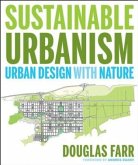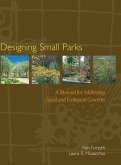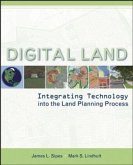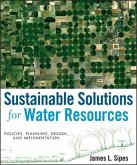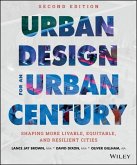Dieser umfassende Leitfaden zur Evaluierung, Auswahl und zum Einsatz nachhaltiger Materialien im Landschaftsbau bietet einen Überblick über Strategien, mit denen sich die Auswirkungen herkömmlicher Baumaterialien auf die Umwelt und die menschliche Gesundheit minimieren lassen, und stellt ökologische Alternativen vor. Neben detaillierten und aktuellen Informationen zu Baumaterialien für eine "grüne Bebauung" erhält der Leser eine Einführung in Werkzeuge, Techniken, Vorstellungen und Quellen für die Evaluierung, Beschaffung und Spezifikation nachhaltiger Baustoffe. In den jeweiligen Kapiteln werden sowohl herkömmliche als auch neue ökologische Materialien, Auswirkungen der einzelnen Baustoffe auf die Umwelt und die menschliche Gesundheit sowie Strategien zur Minimierung derartiger Belastungen beschrieben. Fallstudien geben Auskunft über Kosten und Leistungsmerkmale und dokumentieren die gesammelten praktischen Erfahrungen.
Hinweis: Dieser Artikel kann nur an eine deutsche Lieferadresse ausgeliefert werden.
Hinweis: Dieser Artikel kann nur an eine deutsche Lieferadresse ausgeliefert werden.
"In this book, Calkins (architecture and planning, Ball State Univ.) focuses on the environmental and human health impact of construction materials during their manufacture, transport, installation, use, and disposal, and guides the reader in evaluating, selecting, and using these materials. The work contains 13 chapters, each ending with a list of pertinent references. The first chapter offers a definition of materials for sustainable sites. The following three chapters cover various topics including evaluating the environmental impact of materials and designing with reclaimed, reprocessed, and recycled materials. The remaining nine chapters address in detail such materials as concrete, earthen materials, brick masonry, asphalt pavement, aggregates and stone, wood, metals, plastics and rubber, and biobased materials. The volume ends with two useful appendixes on embodied energy and carbon in construction materials, and on hazardous air pollutants and metals related to construction materials. The book is well written, with mostly good illustrations and informative tables; the binding is rather weak. It will make a good acquisition by an academic or industrial library. Includes a very comprehensive index. Summing Up: Recommended. Graduate through professional architecture and civil and environmental engineering collections." -- T. Z. Kattamis, University of Connecticut (CHOICE, March 2009)
"In this new book, Calkins tells you everything you need to know about materials for sustainable design. This book is certain to become the classic reference for all designers and builders who want to pursue creative design in a way that will help protect the planet." (GardenDesignonline.com, October 20, 2008)
"It's rare to find a must-read book for the profession of landscape architecture...this book is an amazing reference for use during the design process, when assembling materials for use in sustainable ways. This will also be a great tool for planning, ecosystem valuation, life-cycle costing, and many other uses. Planners, designers, and everyone in between will find a use for Materials for Sustainable Sites... this is not a presentation of new source material or research, but rather a comprehensive and encyclopedic collection that provides, dare I say, THE essential source for sustainable materials." (Landscape+Urbanism blogspot.com, October 2, 2008)
"In this new book, Calkins tells you everything you need to know about materials for sustainable design. This book is certain to become the classic reference for all designers and builders who want to pursue creative design in a way that will help protect the planet." (GardenDesignonline.com, October 20, 2008)
"It's rare to find a must-read book for the profession of landscape architecture...this book is an amazing reference for use during the design process, when assembling materials for use in sustainable ways. This will also be a great tool for planning, ecosystem valuation, life-cycle costing, and many other uses. Planners, designers, and everyone in between will find a use for Materials for Sustainable Sites... this is not a presentation of new source material or research, but rather a comprehensive and encyclopedic collection that provides, dare I say, THE essential source for sustainable materials." (Landscape+Urbanism blogspot.com, October 2, 2008)
"Meg Calkin states that materials used in construction of the built environment are damaging the world's ecosystems at an alarming rate. Her book, Materials for Sustainable Sites, is a timely and comprehensive response to the public's growing desire to think, buy and build sustainably. The book title accurately identifies its purpose and value to landscape architects, architects, civil engineers, urban designers and construction management. It provides a guide to professionals who are unsure how to incorporate more sustainable design, techniques and materials into their practice. this book is destined to become an indispensable resource." (Landscape and Urban Planning Journal, 2009)
"...a text specifically targeted to the site applications but which can be referred to in selecting construction materials. It is divided into two parts; the first is ostensibly devoted to honing a technique for specifying materials responsibly, and resources available to help that approach; the second explores nine different materials, steps being taken to reduce their ecological footprints, and notes to consider when specifying these fundamentals" (GreenSource.com, September 2009)
"...Calkins makes complex matters understandable even for nonexperts. In each section that I sampled, I came away pleased by how much Calkins was able to convey, and how clearly. Materials for Sustainable Sites is an instructive and frequently enlightening book. It deserves a place on the new urbanist bookshelf..." (New Urban News, March 2009)
"This book, for the profession of landscape architecture is highly important in identifying the consequences of poorly chosen materials on human health. So read this book, and use it as a guide. Even more importantly, lend it to others and teach the world the importance of the practice of being sustainable." (larcexchange.com, February 11th, 2009)
"Minimizing environmental and human health impacts of site construction materials is the focus of Materials for Sustainable Sites." (Construction Specifier, December 2008)
"This book is a serious reference manual. Nearly every page has diagrams, tables of definitions and comparisons, and lists of guidelines. The timing of this book's publication is ideal, being aligned with the launch of the Sustainable Sites Initiative, to which Calkins has contributed expertise. Materials for Sustainable Sites will be the constant companion of landscape architects and related professionals who want both inspiration and credible information about the sustainable palette of our art." (Landscape Architecture, April 2009)
"Weightly tome offering a comprehensive guide to evaluating selecting and using sustainable construction materials." (Grand Designs, April 2009)
"...provides detailed information for architects and builders on materials and products that use resources efficiently, minimize embodied energy and carbon, avoid harming human or environmental health at any phase of their life cycle, and assist with sustainable site design strategies." (Book News; 12/08)
"When it comes time to choose materials for those home and garden projects, there's now a wonderful green guide. This guidebook is indispensable for anyone planning construction projects. It is destined to become a classic." (bellaonline.com; 11/08)
In this book, Calkins (architecture and planning, Ball State Univ.) focuses on the environmental and human health impact of construction materials during their manufacture, transport, installation, use, and disposal, and guides the reader in evaluating, selecting, and using these materials. The work contains 13 chapters, each ending with a list of pertinent references. The first chapter offers a definition of materials for sustainable sites. The following three chapters cover various topics including evaluating the environmental impact of materials and designing with reclaimed, reprocessed, and recycled materials. The remaining nine chapters address in detail such materials as concrete, earthen materials, brick masonry, asphalt pavement, aggregates and stone, wood, metals, plastics and rubber, and biobased materials. The volume ends with two useful appendixes on embodied energy and carbon in construction materials, and on hazardous air pollutants and metals related to construction materials. The book is well written, with mostly good illustrations and informative tables; the binding is rather weak. It will make a good acquisition by an academic or industrial library. Includes a very comprehensive index. Summing Up: Recommended. Graduate through professional architecture and civil and environmental engineering collections. (T. Z. Kattamis, University of Connecticut, CHOICE, March 2009)
In this new book, Calkins tells you everything you need to know about materials for sustainable design. This book is certain to become the classic reference for all designers and builders who want to pursue creative design in a way that will help protect the planet.(GardenDesignonline.com, October 20, 2008)
It's rare to find a must-read book for the profession of landscape architecture...this book is an amazing reference for use during the design process, when assembling materials for use in sustainable ways. This will also be a great tool for planning, ecosystem valuation, life-cycle costing, and many other uses. Planners, designers, and everyone in between will find a use for Materials for Sustainable Sites... this is not a presentation of new source material or research, but rather a comprehensive and encyclopedic collection that provides, dare I say, THE essential source for sustainable materials. (Landscape+Urbanism blogspot.com, October 2, 2008)
"...a text specifically targeted to the site applications but which can be referred to in selecting construction materials. It is divided into two parts; the first is ostensibly devoted to honing a technique for specifying materials responsibly, and resources available to help that approach; the second explores nine different materials, steps being taken to reduce their ecological footprints, and notes to consider when specifying these fundamentals" (GreenSource.com, September 2009)
"...Calkins makes complex matters understandable even for nonexperts. In each section that I sampled, I came away pleased by how much Calkins was able to convey, and how clearly. Materials for Sustainable Sites is an instructive and frequently enlightening book. It deserves a place on the new urbanist bookshelf..." (New Urban News, March 2009)
"This book, for the profession of landscape architecture is highly important in identifying the consequences of poorly chosen materials on human health. So read this book, and use it as a guide. Even more importantly, lend it to others and teach the world the importance of the practice of being sustainable." (larcexchange.com, February 11th, 2009)
"Minimizing environmental and human health impacts of site construction materials is the focus of Materials for Sustainable Sites." (Construction Specifier, December 2008)
"This book is a serious reference manual. Nearly every page has diagrams, tables of definitions and comparisons, and lists of guidelines. The timing of this book's publication is ideal, being aligned with the launch of the Sustainable Sites Initiative, to which Calkins has contributed expertise. Materials for Sustainable Sites will be the constant companion of landscape architects and related professionals who want both inspiration and credible information about the sustainable palette of our art." (Landscape Architecture, April 2009)
"Weightly tome offering a comprehensive guide to evaluating selecting and using sustainable construction materials." (Grand Designs, April 2009)
"...provides detailed information for architects and builders on materials and products that use resources efficiently, minimize embodied energy and carbon, avoid harming human or environmental health at any phase of their life cycle, and assist with sustainable site design strategies." (Book News; 12/08)
"When it comes time to choose materials for those home and garden projects, there's now a wonderful green guide. This guidebook is indispensable for anyone planning construction projects. It is destined to become a classic." (bellaonline.com; 11/08)
In this book, Calkins (architecture and planning, Ball State Univ.) focuses on the environmental and human health impact of construction materials during their manufacture, transport, installation, use, and disposal, and guides the reader in evaluating, selecting, and using these materials. The work contains 13 chapters, each ending with a list of pertinent references. The first chapter offers a definition of materials for sustainable sites. The following three chapters cover various topics including evaluating the environmental impact of materials and designing with reclaimed, reprocessed, and recycled materials. The remaining nine chapters address in detail such materials as concrete, earthen materials, brick masonry, asphalt pavement, aggregates and stone, wood, metals, plastics and rubber, and biobased materials. The volume ends with two useful appendixes on embodied energy and carbon in construction materials, and on hazardous air pollutants and metals related to construction materials. The book is well written, with mostly good illustrations and informative tables; the binding is rather weak. It will make a good acquisition by an academic or industrial library. Includes a very comprehensive index. Summing Up: Recommended. Graduate through professional architecture and civil and environmental engineering collections. (T. Z. Kattamis, University of Connecticut, CHOICE, March 2009)
In this new book, Calkins tells you everything you need to know about materials for sustainable design. This book is certain to become the classic reference for all designers and builders who want to pursue creative design in a way that will help protect the planet.(GardenDesignonline.com, October 20, 2008)
It's rare to find a must-read book for the profession of landscape architecture...this book is an amazing reference for use during the design process, when assembling materials for use in sustainable ways. This will also be a great tool for planning, ecosystem valuation, life-cycle costing, and many other uses. Planners, designers, and everyone in between will find a use for Materials for Sustainable Sites... this is not a presentation of new source material or research, but rather a comprehensive and encyclopedic collection that provides, dare I say, THE essential source for sustainable materials. (Landscape+Urbanism blogspot.com, October 2, 2008)
